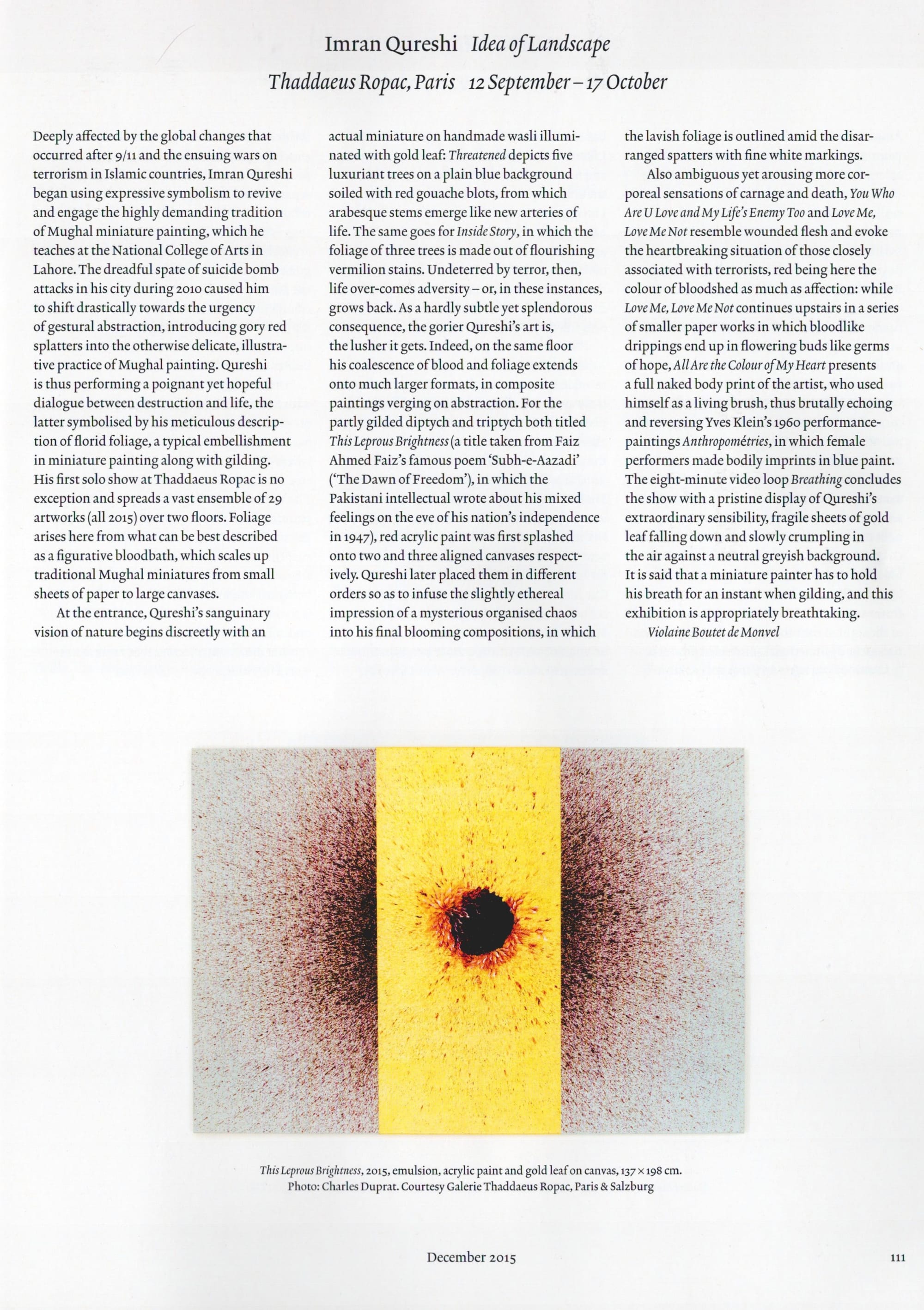
Idea of Landscape

The dark red vines that entwine the trunks of the trees that populate Imran Qureshi’s miniature landscape paintings end in sprays of similarly-coloured foliage, but the visual association is as much anatomical as botanical. The vines are equally veins, the sprays not leaves but spurts of fresh blood, echoes of the carnage created by bomb blasts in the artist’s native Lahore, and a patterning that recurs in his work. There’s unsettling gore (or what resembles it) everywhere in Qureshi’s commission for London’s Barbican Curve gallery – up the walls, across the floor and spattered across the 35 paintings themselves, which hang in a snaking line along the wall of the darkened space, illuminated by spotlights that bounce back light from areas of gold leaf within the work. There’s destruction too in the way that some trees appear snapped off at their base or torn up by their roots, or in the way that the earth, with its curved horizon line mirroring the curve of the gallery, may appear gashed or ruptured. Rebirth comes in the white peony-like painted blooms that Qureshi skilfully suggests, growing out of the rivulets of red.
If the reproductions of the paintings in this slim publication that accompanies the show don’t quite capture either the darkness or the luminosity of Qureshi’s work, then the words of Mohsin Hamid do.
Curator Eleanor Nairne’s text provides context but author Hamid paints a picture of the artist and the work in a more poetic way. Through 35, beautifully paced, numbered paragraphs – the same number as paintings in the show – Hamid describes a meeting with Qureshi and his journey from child to artist, to the creation of these paintings. It’s a perfectly pitched piece of prose.
